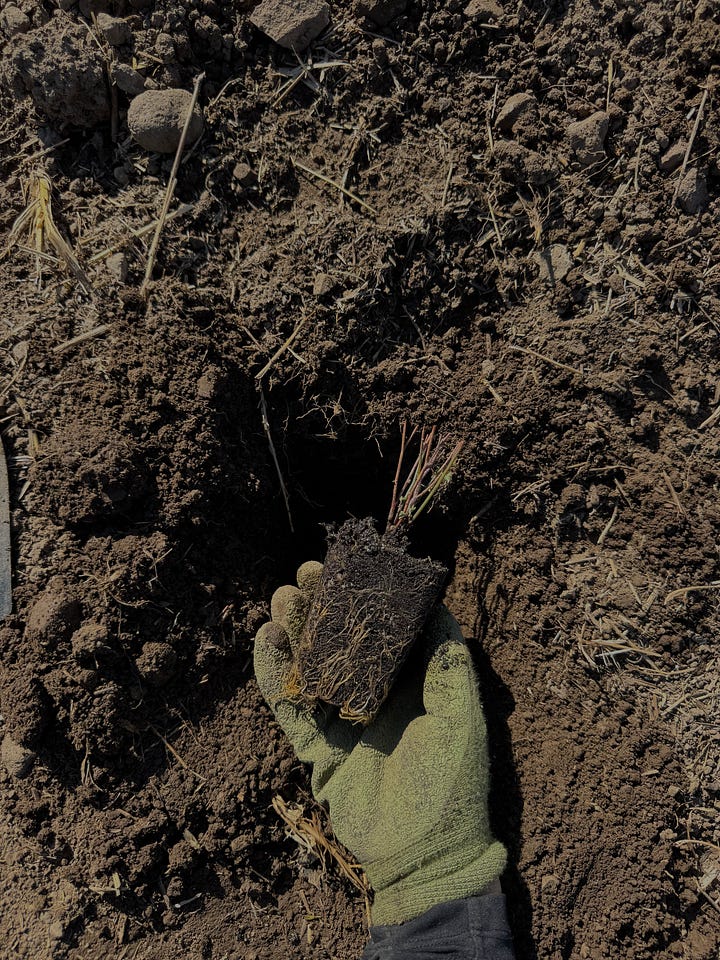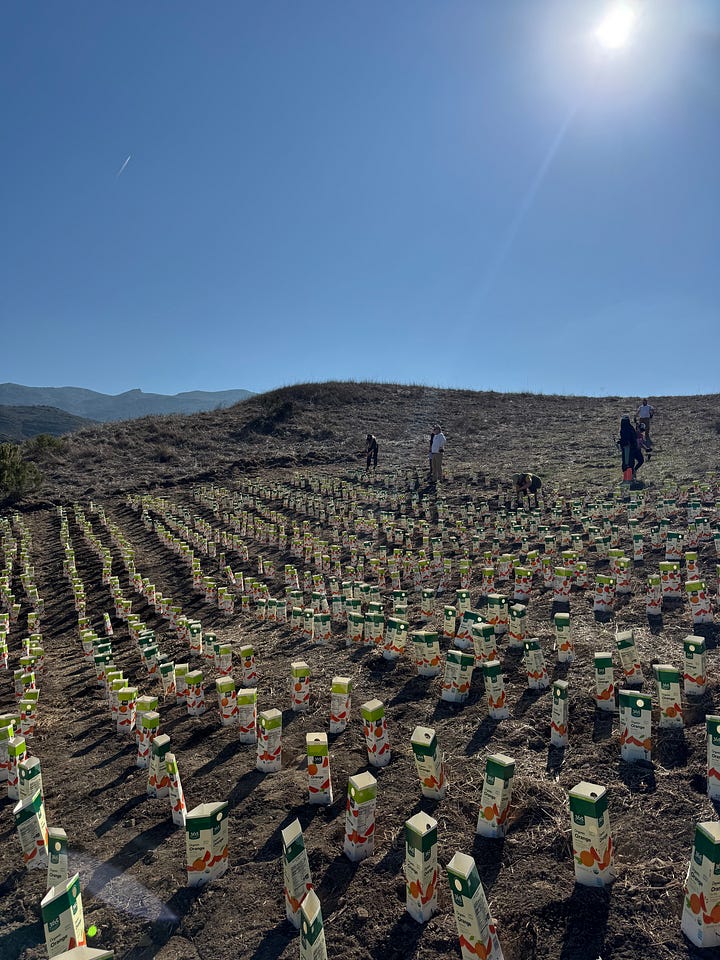When the world feels like a terrible place
And the violence feels too heavy to bear
I step outside
Close my eyes
And listen to the hymns that mother nature has to share
I feel the deep warmth of her sun nourish me
Absorbing the same light and strength
That it gave my ancestors
Brought to this land unwillingly.
I hear the wind rustle through the trees,
Each gust gifting soft kisses to each leaf.
How delightful it must be to feel
The movement of a tender breeze
On a hot sticky day,
In a lifetime of being immobile
Rooted deeply, there to stay
Silently observing, waiting for a change.
How lucky are we to see a new day,
Create our own movement, and pave a new way.
I know one day we’ll see it come
Justice and liberation for people and the planet.
How delightful it will feel,
Knowing it took all of us moving as one.
— Summer Dean, June 2020
At the end of 2024, I made a resolution to learn more about land restoration and permaculture this year. I would like to spend more time restoring and tending to the land that I live on. In environmental spaces, you often hear people talk about climate solutions in big, general terms– we need to decarbonize our economy, transition the fossil fuel industry, address overconsumption, get rid of single-use plastics, and tackle industrial agriculture. Those things are all central to achieving a better future, and we should absolutely be devoting all of our resources towards a sustainable revolution. But, at a time when the federal government is controlled by climate denying, anti-science politicians, making that transition on a system-wide scale is going to be incredibly daunting and challenging.
We often forget that the climate crisis is a crisis of disconnection– disconnection with the land we live on, the species we share this planet with, our fellow neighbors, and our own spirits. There is a spiritual side to the climate equation that often gets overlooked because of the focus on the obvious (and important!) scientific, mathematical side of things. And while we should clearly be focusing on science, I often wonder how many people we’re leaving out of the sustainability conversation by discounting the emotional, spiritual side of our connection to the planet. You can explain climate science to someone all day long, but it won’t be until they connect with the land on a personal, intimate level that they will begin to truly feel their connection to this planet.
Our ancient, reciprocal relationship with mother earth can only begin to be understood when we tend to the land ourselves. We protect what we love, and we can only love what we feel connected to. Engaging in land restoration is one of the easiest and most effective ways to repair our relationship with mother earth, and I’d argue that in these times, restoring the local land that you live on is one of the biggest climate actions you can take.
When the fire storm began in Los Angeles earlier this month (which was fueled by invasive species, a lack of land restoration, and climate-change induced weather patterns..see my video on the causes of the fires here) I thought back to my New Year’s resolution that I made in December. The fires were a harsh reminder that our relationship to the land and fire is incredibly broken. Indigenous peoples have always known that fire is a regular part of Southern California landscapes, and they have always used fire as a tool to regenerate the land, doing controlled burns and tending to fire-resistant native plant species. Los Angeles has been completely devastated this month; more than 18,000 houses and buildings were burnt down, causing over $250 billion in damage. Some economists have said this could be the costliest natural disaster in world history.
Wildfires are a regular part of the Southern California landscape, but if we are to prevent them from being this intense in the future, we must follow Indigenous wisdom, which tells us that native plants are one of the best tools that we have to create a fire-resistant landscape. As of now, the burnt areas of landscape in LA are starting completely fresh. The land will regenerate over time, but it will go one of two ways: either 1) we continue business as usual, letting the land regenerate on its own, (in which there’s a high probability that invasive species will take over again and create tinder box-like conditions), or 2), in the coming years, we organize as many people as possible to volunteer doing land restoration, planting native species, and removing invasives. The latter is entirely possible if we create a culture of love + care for the land we live on. And in a period when no environmental action is going to come from the White House, healing the land we live on through restoration is one of the most direct, effective solutions to the climate crisis. While we’re outside, moving our bodies, and caring for the land so intimately, we may even build a stronger spiritual connection to the earth in the process. And I’d argue that’s just as important.
Here’s a list of upcoming land restoration events near Los Angeles:
Thursday, January 30th:
Friday, January 31st:
Saturday, February 1st:
Check the TreePeople calendar for all of their upcoming restoration events.


xo
Summer
Follow me on Instagram
Subscribe to my YouTube




